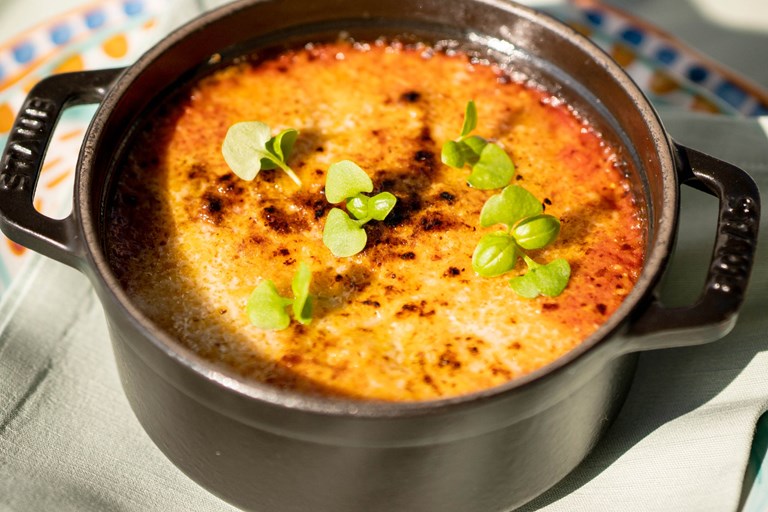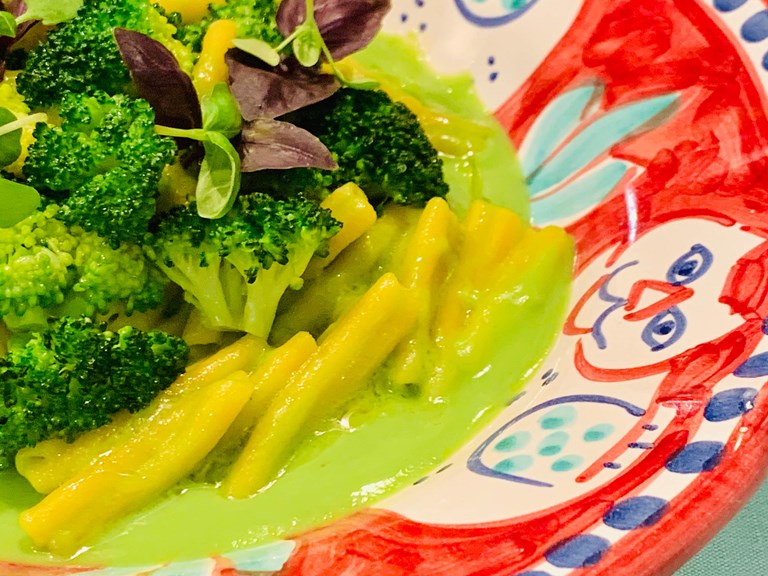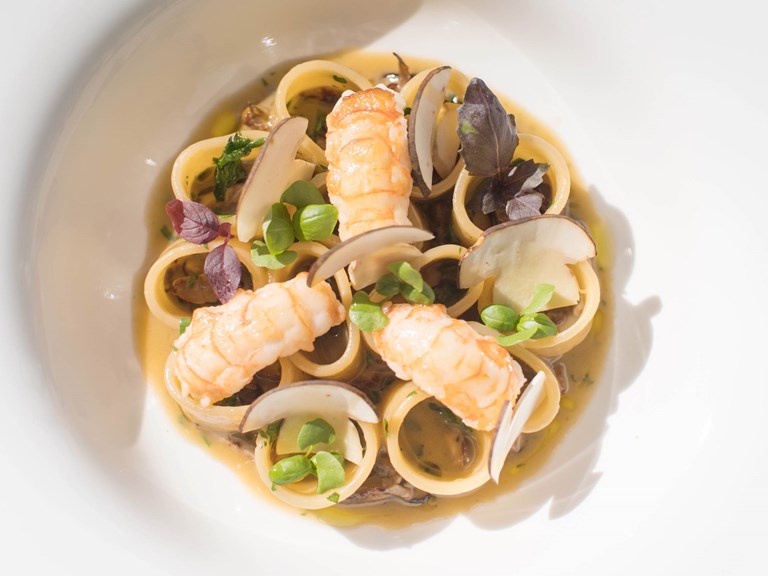RECIPE: PARMIGIANA DI MELANZANE
28.02.2020 RECIPES
If you want to avoid shocking the locals, don’t mention chicken or veal parmigiana, let alone the shrimp, sausage or meatball varieties. Those were all invented by Italian restaurants in the USA around the middle of the twentieth century. The only parmigiane that are admitted in Italy are the eggplant and zucchini (or courgette) versions, plus sogliola alla parmigiana – a good way of enhancing the delicate flavor of sole, this is probably the only fish and cheese pairing that doesn’t provoke horror in the Italian kitchen.
The origins of parmigiana di melanzane, which Neapolitans often simply refer to as parmigiana, are obscure. It is likely to have entered the local repertoire in the early 19thcentury, around the time that tomatoes started to become southern Italy’s go-to ingredient. Food writer Clifford Wright discounts most of the more fanciful derivations of the name. The most obvious explanation – that is was a dish made with parmesan cheese – is, he believes, the correct one. Though not native to the south, Italy’s most famous hard cheese was widely traded in the region from the 14th century onwards – and its tangy bittersweet bite is an essential complement to the meltingly mild fior di latte or mozzarella that also features in the dish.
The version offered here by Le Sirenuse’s chef Gennaro Russo adopts the most common Neapolitan approach to the eggplant slices – they are simply dipped in a little flour before frying, rather than in flour, egg and breadcrumbs. This makes for a much lighter parmigiana, but one that is no less flavorsome.
Ingredient
to serve 4
- 2 good-sized eggplants (aubergines)
- 150g (5.3oz) fior di latte or mozzarella cheese, cut into thin slices
- 50g (1.7oz) grated parmesan
- 500g (18oz) passata di pomodoro (sieved uncooked tomato purée)
- white flour for dusting
- 4 tablespoons olive oil
- 2 cloves of garlic
- 2 knobs of butter
- a bunch of basil leaves
- salt and pepper to taste
First peel the eggplants lengthways, leaving alternate strips of skin on – you’re aiming for a striped effect. Then slice them into rounds just under 1cm (a quarter inch) thick. Sprinkle coarse sea salt sparingly on the cut surfaces, and leave them to sweat for around 20 minutes. While they’re sweating, lightly fry the crushed garlic cloves in a little oil and add this (oil and all) to the tomato passata. This is also a good time to turn the oven on: set it to 200°C.
Rinse the salt off the aubergines, pat them dry, then sprinkle a little flour on both sides of each eggplant slice. Pour the oil into a frying pan, put it on a medium heat, and when it’s nice and hot, add the flour-dusted eggplant slices and fry until golden on both sides. Arrange the fried slices on absorbent kitchen paper to soak up excess oil.
Now the assembly of this multi-layered dish begins. In a buttered oven or casserole dish, build up: 1) a layer of passata, just enough to barely cover the bottom; 2) a layer of fried eggplants; 3) a layer of fior di latte, parmesan and basil; 4) another layer of eggplants; 5) some more basil; 6) a thin layer of passata; 7) any left-over slices of eggplant, and the rest of the parmesan. Put the two knobs of butter on top, place in the oven, and bake for around 40 minutes.
This is a dish better served warm than hot: so let it cool for at least 10 minutes before serving.
Photo © Roberto Salomone
Le Sirenuse Newsletter
Stay up to date
Sign up to our newsletter for regular updates on Amalfi Coast stories, events, recipes and glorious sunsets


